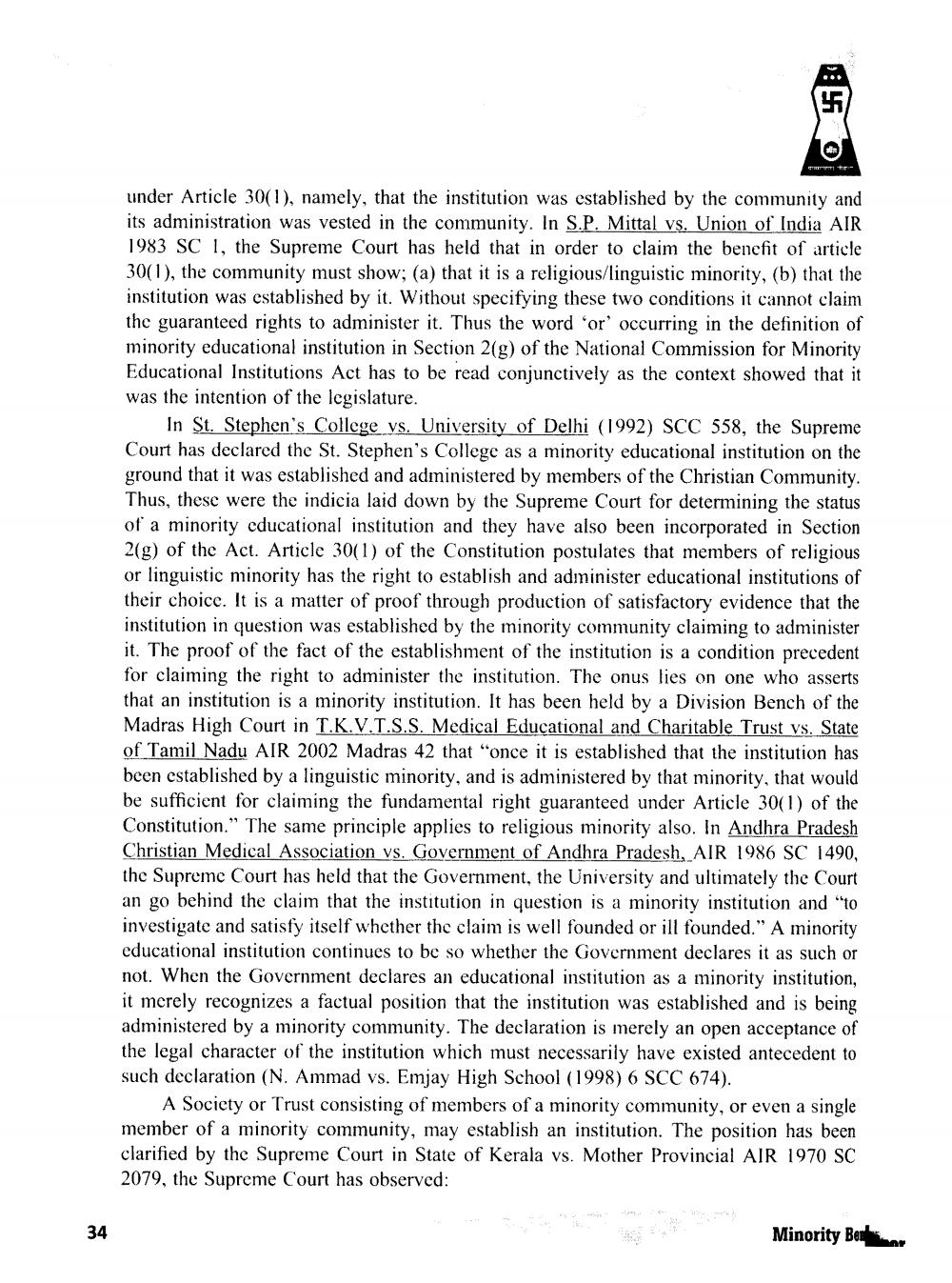________________
under Article 30(1), namely, that the institution was established by the community and its administration was vested in the community. In S.P. Mittal vs. Union of India AIR 1983 SC 1, the Supreme Court has held that in order to claim the benefit of article 30(1), the community must show; (a) that it is a religious/linguistic minority, (b) that the institution was established by it. Without specifying these two conditions it cannot claim the guaranteed rights to administer it. Thus the word 'or' occurring in the definition of minority educational institution in Section 2(g) of the National Commission for Minority Educational Institutions Act has to be read conjunctively as the context showed that it was the intention of the legislature.
In St. Stephen's College vs. University of Delhi (1992) SCC 558, the Supreme Court has declared the St. Stephen's College as a minority educational institution on the ground that it was established and administered by members of the Christian Community. Thus, these were the indicia laid down by the Supreme Court for determining the status of a minority cducational institution and they have also been incorporated in Section 2(g) of the Act. Article 30(1) of the Constitution postulates that members of religious or linguistic minority has the right to establish and administer educational institutions of their choice. It is a matter of proof through production of satisfactory evidence that the institution in question was established by the minority community claiming to administer it. The proof of the fact of the establishment of the institution is a condition precedent for claiming the right to administer the institution. The onus lies on one who asserts that an institution is a minority institution. It has been held by a Division Bench of the Madras High Court in T.K.V.T.S.S. Medical Educational and Charitable Trust vs. State of Tamil Nadu AIR 2002 Madras 42 that "once it is established that the institution has been established by a linguistic minority, and is administered by that minority, that would be sufficient for claiming the fundamental right guaranteed under Article 30(1) of the Constitution." The same principle applies to religious minority also. In Andhra Pradesh Christian Medical Association vs. Government of Andhra Pradesh, AIR 1986 SC 1490, the Supreme Court has held that the Government, the University and ultimately the Court an go behind the claim that the institution in question is a minority institution and to investigate and satisfy itself whether the claim is well founded or ill founded." A minority educational institution continues to be so whether the Government declares it as such or not. When the Government declares an educational institution as a minority institution, it merely recognizes a factual position that the institution was established and is being administered by a minority community. The declaration is merely an open acceptance of the legal character of the institution which must necessarily have existed antecedent to such declaration (N. Ammad vs. Emjay High School (1998) 6 SCC 674).
A Society or Trust consisting of members of a minority community, or even a single member of a minority community, may establish an institution. The position has been clarified by the Supreme Court in State of Kerala vs. Mother Provincial AIR 1970 SC 2079, the Supreme Court has observed:
34
Minority Bene




